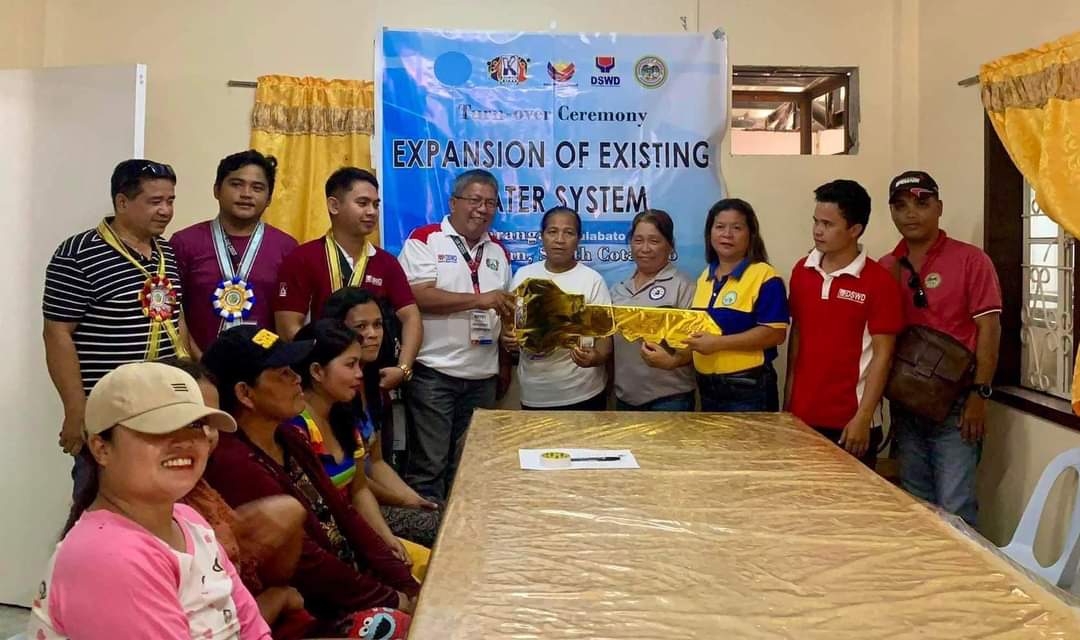From the Philippine Information Agency (Jun 20, 2024): DSWD’s KALAHI-CIDSS transforms lives through community-driven infrastructure (By Jether Capillo)

KORONADAL CITY, South Cotabato (PIA) – The Department of Social Welfare and Development (DSWD) in Region 12 is making significant strides in community development through its KALAHI-CIDSS program, or Kapit Bisig Laban sa Kahirapan – Comprehensive and Integrated Delivery of Social Services.
For many years, the initiative has been empowering communities as they identify and prioritize essential infrastructure projects like potable water systems, quarantine facilities, tribal housing, street lighting, and farm-to-market roads.
During an episode of “Kapihan sa Bagong Pilipinas” on June 18, DSWD Regional Director Loreto Cabaya Jr. said KALAHI-CIDSS has successfully completed 903 subprojects across the Soccsksargen region.
He noted that these projects were funded through various initiatives, including Payapa at Masaganang Pamayanan (PAMANA), Kapangyarihan at Kaunlaran sa Barangay (KKB), and additional financing funds.

DSWD Regional Director Loreto Cabaya Jr. served as the main resource person in the latest installment of “Kapihan Sa Bagong Pilipinas,” facilitated by PIA Regional Head Fryan Abkilan (left). During the event, Cabaya presented the various accomplishments of DSWD in Region 12, especially its flagship programs as well as its initiatives, to the public. (Photo by PIA Region 12)
One notable example, Cabaya said, was the recent turnover of two water system expansions worth P3.36 million each to Barangays Pula Bato and San Isidro in Tampakan, South Cotabato, with Barangay Palo also receiving an improved public building valued at P2.25 million to serve as a quarantine facility.
According to him, these projects have a profound impact on the lives of community members, as they’ve helped enhance access to potable water, transforming their lives and social interactions.
Elsi German, a volunteer from Barangay Pula Bato, expressed gratitude to the government, stating that the DSWD KALAHI-CIDSS staff not only provided technical assistance but also listened to them, making them believe that change was possible when there’s unity and teamwork, or bayanihan.
“Dati-rati po kasi halos walang gustong tumulong sa amin, unang una, dahil sa layo ng aming lugar. Ikalawa walang interesadong tumulong. Pero ng bumaba po ang mga kawani ng DSWD KALAHI CIDSS at pinakinggan kami doon namin naramdaman na posible ang pagbabago,” German said.
(In the past, we felt that nobody was helping us; perhaps it was primarily due to our remote location. Secondly, it seemed as though no one was eager to assist us. But when the DSWD KALAHI-CIDSS staff came down, they listened to us, which made us feel and believe that change was possible.)
Cabaya then pointed out that the success of KALAHI-CIDSS only shows how community involvement and DSWD’s dedication can greatly improve lives in Soccsksargen through essential infrastructure projects, which the community stakeholders themselves identify for implementation. (JZC – PIA Region 12)
[Retired Analyst Note: The DSWD’s KALAHI-CIDSS program has been an integral part of the "Whole of government" approach to counterinsurgency operations in conflict-affected areas.]
https://www.pia.gov.ph/dswds-kalahi-cidss-transforms-lives-through-community-driven-infrastructure/
One notable example, Cabaya said, was the recent turnover of two water system expansions worth P3.36 million each to Barangays Pula Bato and San Isidro in Tampakan, South Cotabato, with Barangay Palo also receiving an improved public building valued at P2.25 million to serve as a quarantine facility.
According to him, these projects have a profound impact on the lives of community members, as they’ve helped enhance access to potable water, transforming their lives and social interactions.
Elsi German, a volunteer from Barangay Pula Bato, expressed gratitude to the government, stating that the DSWD KALAHI-CIDSS staff not only provided technical assistance but also listened to them, making them believe that change was possible when there’s unity and teamwork, or bayanihan.
“Dati-rati po kasi halos walang gustong tumulong sa amin, unang una, dahil sa layo ng aming lugar. Ikalawa walang interesadong tumulong. Pero ng bumaba po ang mga kawani ng DSWD KALAHI CIDSS at pinakinggan kami doon namin naramdaman na posible ang pagbabago,” German said.
(In the past, we felt that nobody was helping us; perhaps it was primarily due to our remote location. Secondly, it seemed as though no one was eager to assist us. But when the DSWD KALAHI-CIDSS staff came down, they listened to us, which made us feel and believe that change was possible.)
Cabaya then pointed out that the success of KALAHI-CIDSS only shows how community involvement and DSWD’s dedication can greatly improve lives in Soccsksargen through essential infrastructure projects, which the community stakeholders themselves identify for implementation. (JZC – PIA Region 12)
[Retired Analyst Note: The DSWD’s KALAHI-CIDSS program has been an integral part of the "Whole of government" approach to counterinsurgency operations in conflict-affected areas.]
https://www.pia.gov.ph/dswds-kalahi-cidss-transforms-lives-through-community-driven-infrastructure/

No comments:
Post a Comment
Note: Only a member of this blog may post a comment.